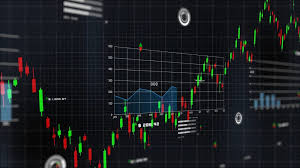
Understanding the Crypto Trading Framework
The world of cryptocurrency trading can be both exhilarating and daunting. For newcomers and seasoned traders alike, having a structured Crypto Trading Framework https://www.freedomsphoenix.com/Forum/Add?EdNo=001&Type=News&Info=085106 is essential. This framework serves as a comprehensive guide, ensuring that traders are equipped with the necessary skills and knowledge to navigate the volatile crypto market effectively.
What is a Crypto Trading Framework?
A Crypto Trading Framework is essentially a set of guidelines, strategies, and tools that traders can use to make informed decisions in their trading activities. This framework can include various components such as market analysis, risk management strategies, trading psychology, and the use of trading tools and platforms. Having a solid framework helps traders minimize risks and maximize gains.
The Importance of a Framework in Trading
Trading without a clear framework can lead to impulsive decisions and significant losses. A well-defined framework helps establish goals and provides a plan for achieving them. This is particularly important in the cryptocurrency space, where market fluctuations can be extremely sharp. Traders are better prepared to handle emotions and avoid making rash decisions when they have a structured approach to follow.
Components of a Crypto Trading Framework
Several core components are crucial in developing a comprehensive Crypto Trading Framework:
1. Market Analysis
Understanding the market is perhaps the most vital aspect of trading. Traders typically employ two primary forms of analysis:
- Fundamental Analysis: This involves evaluating the underlying factors that affect the value of a cryptocurrency. This includes looking at the project’s technology, use case, team, regulatory environment, and market demand.
- Technical Analysis: Traders use price charts and various indicators to predict future price movements based on historical data. Common indicators include moving averages, Relative Strength Index (RSI), and Fibonacci retracement levels.
2. Risk Management

Managing risk is crucial in trading, especially given the volatility of cryptocurrencies. Effective risk management strategies may include:
- Setting Stop-Loss Orders: This involves setting a predetermined price at which a trader will sell their asset to prevent further losses.
- Diversifying Investments: Spreading investments across multiple assets can help mitigate risk.
- Position Sizing: Calculating the size of a position relative to the account balance and risk tolerance is essential. A common rule is not to risk more than 1-2% of the total account balance on a single trade.
3. Trading Strategy
Every trader should have a well-thought-out trading strategy. This could be based on technical indicators, market sentiment, or specific patterns observed in historical data. Popular strategies include:
- Scalping
- Swing Trading: Traders holding positions for several days or weeks tend to capitalize on expected upward or downward shifts in price.
- Long-Term Investing: Some traders prefer to buy and hold assets for an extended period, betting on their long-term growth.
Tools of the Trade
To implement a successful Crypto Trading Framework, traders require various tools:
- Trading Platforms: Platforms like Binance, Coinbase, and Kraken provide traders with necessary features like price charts, trading pairs, and order types.
- Portfolio Trackers: Tools like Blockfolio or CoinStats help traders keep track of their investments in real-time.
- News Aggregators: Keeping up-to-date with the latest news can positively influence trading decisions. Services like CoinDesk and CryptoSlate can be valuable sources of information.
Emotional Discipline
Trading can evoke a wide range of emotions, from excitement during a profitable trade to despair following a loss. This emotional rollercoaster is why discipline is crucial. A successful trader adheres to their predetermined trading plan, avoiding the temptation to deviate due to fear or greed. Techniques such as keeping a trading journal can help in developing emotional discipline by allowing traders to reflect on their decisions, movements, and emotions throughout the trading process.
Continuous Learning and Adaptation
The cryptocurrency market is constantly evolving, which means traders must stay informed and adapt their frameworks accordingly. Engaging in continuous education by attending webinars, reading books, and following industry experts can significantly enhance trading skills. Additionally, modifying the trading framework based on market conditions and personal performance is essential to long-term success.
Conclusion
In conclusion, a well-structured Crypto Trading Framework is indispensable for anyone looking to navigate the complexities of cryptocurrency trading. By focusing on market analysis, risk management, trading strategies, and emotional discipline, traders can improve their chances of success in a highly volatile market. With continuous learning and adaptation, a strong trading framework can lead to not just profitable trades but also a deeper understanding of the dynamic world of cryptocurrencies.






